|
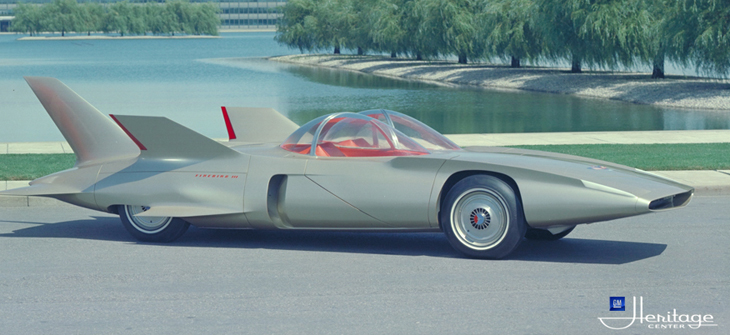
Firebird III at the General Motors Tech Center in Warren, Michigan
Firebird III
1958 GM Motorama. Firebird III
The Firebird III was by far the most intriguing and influential of the Motorama Firebirds. Built in 1958, it was the only member of the Firebird trio to
have any direct impact on the design of General Motors production vehicles. The 1959 Cadillac featured some of the Firebird III's surface
development and its severe rocker panel tuckunder. The 1961 Caddy picked up the Firebird's rear skegs - those stubby little fins that hung down off
the bottoms of the rear fenders. The Firebird III broke a number of legendary GM designer Harley Earl's styling rules and that's one of the reasons it
became such an important design. It had very little chrome and no parallel lines. The vehicle also put the ultimate twist on tailfins. GM entertained
plans for a Firebird IV that went as far as a full-sized wooden frame, but the program's greatest legacy was to give its name to the Pontiac ponycars starting in 1967
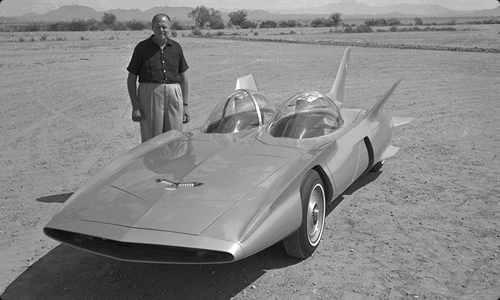
Harley Earl with the Firebird III
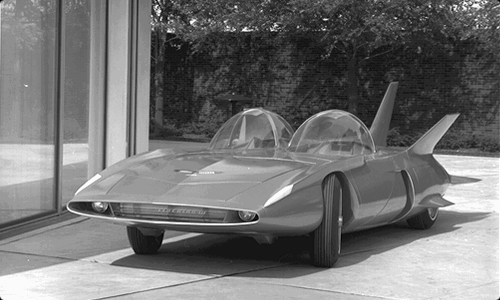
Parked near a 1950's-style home
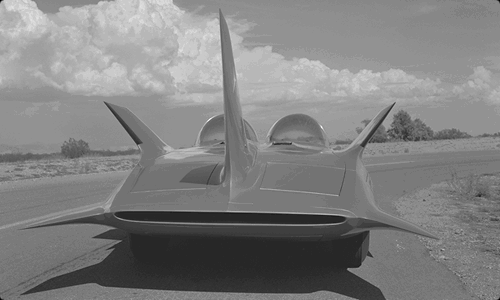
A tail fin view of the Firebird III
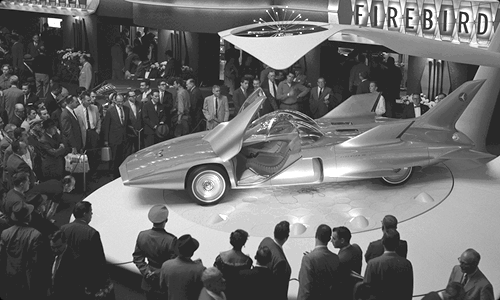
The Firebird III steals the stage at the 1959 Motorama

The Firebird III goes through its paces on the test track
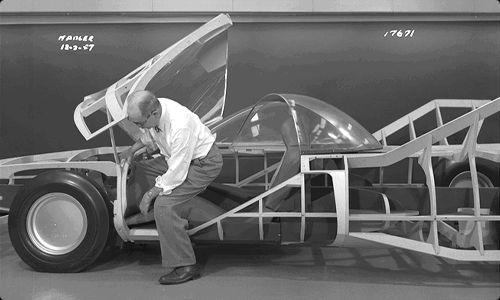
The Firebird III's buck is inspected
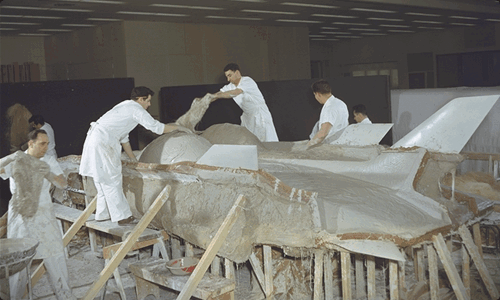
Plaster is poured on the Firebird III in 1958
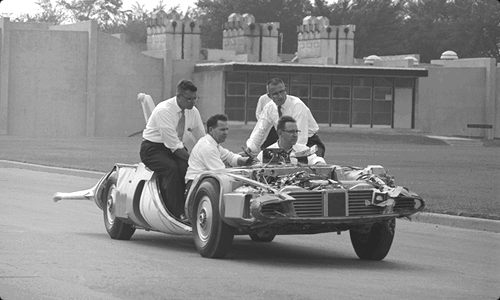
One of the vehicles early test drives
Firebird II
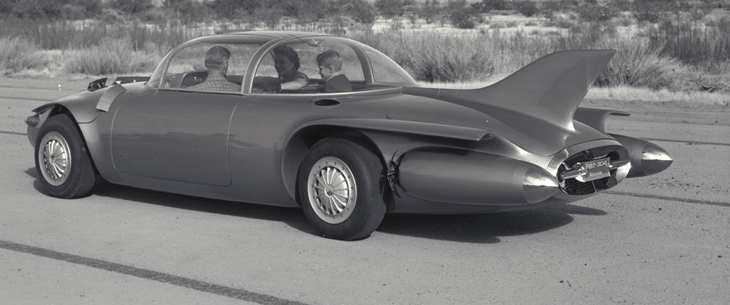
Firebird II during the promotional film shoot in 1957
1956 GM Motorama. Firebird II
The General Motors Firebird II, a gas-turbine powered engineering concept car, was introduced at the 1956 GM Motorama. Firebird II was the successor to the famous 1953 Firebird I.
The four-passenger Firebird II was characterized by innovations like a titanium body, a regenerative gas turbine, all-wheel independent suspension
with automatic load-leveling, power disc brakes, alternator, magnetic ignition key, electric gear selection, and individually-controlled air conditioning.
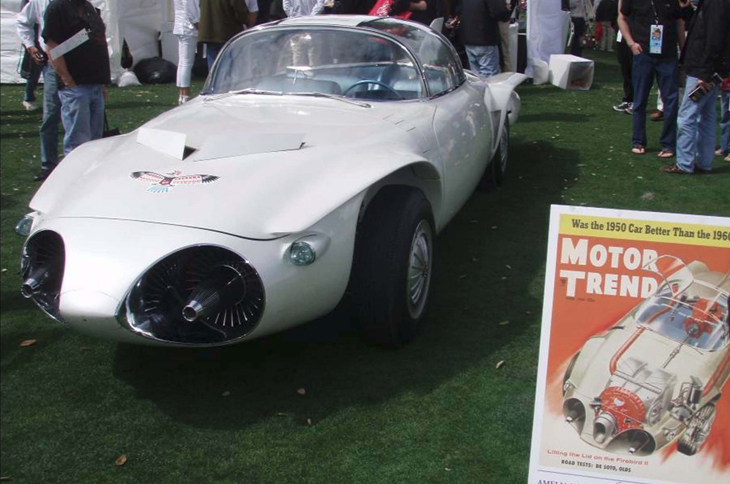
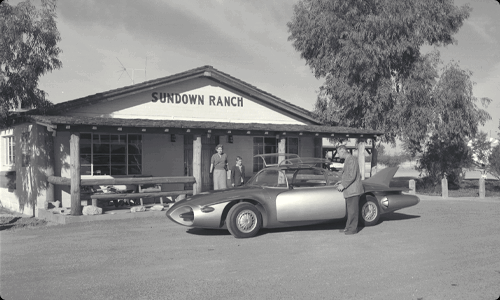
Firebird II during the promotional film shoot in 1957
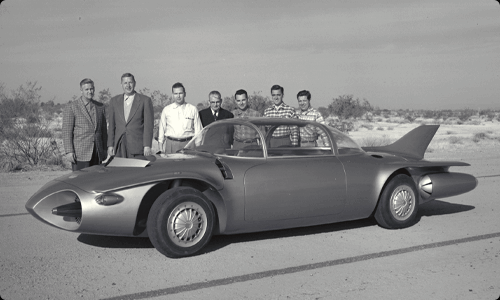
The GM technical team with Firebird II during the 1957 promotional shoot. (L to R) Emmett Conklin, Bill Turunen, Gene Flanigan, Bert MacKenzie, Bill
Hoef, Bob Tarien, and a GMR technician
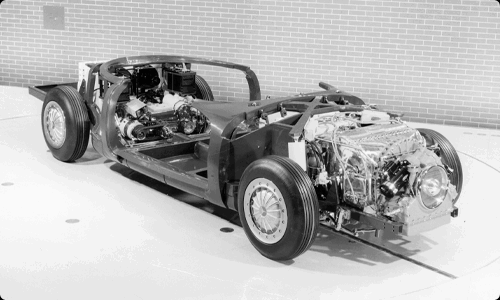
A front 3/4 view of the Firebird II chassis taken at the GM Technical Center
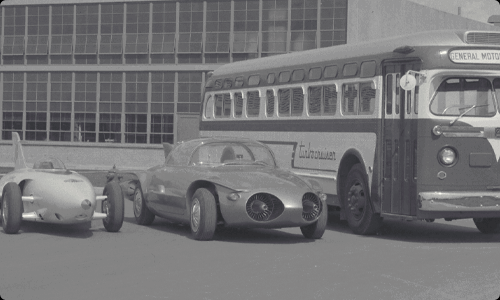
Firebird I, Firebird II, and the Turbocruiser Bus
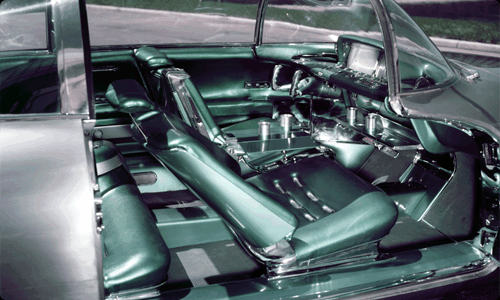
The interior of Firebird II
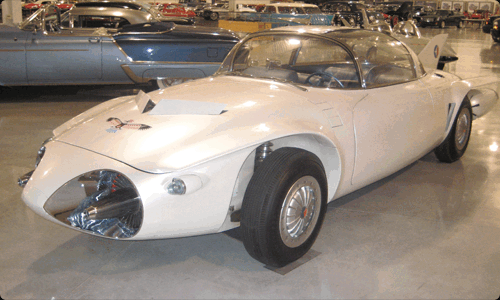

The Firebird II at the GM Heritage Center
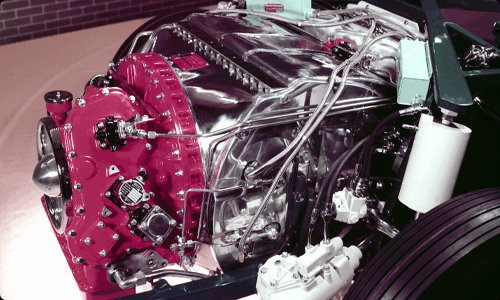
The gas turbine engine used in Firebird II
Firebird 1
The 1953 XP-21 Firebird 1
The 1953 XP-21 Firebird 1 was the first gas turbine automobile ever to be built and tested in the United States. Designed strictly as an engineering
and styling exercise, Firebird 1 was intended to determine whether the gas turbine could be used as an efficient and economical powerplant for future vehicles.
The idea for Firebird 1 originated with Harley J. Earl, the legendary GM Styling Vice President, who also designed the car's aircraft-inspired
fiberglass-reinforced plastic body. The engine, termed "Whirlfire Turbo-Power," was developed under the direction of Charles L. McCuen, then general manager of GM Research Laboratories Division.
Unlike a jet airplane, which develops thrust through the action of exhaust gas through a tailcone, the Whirlfire Turbo-Power engine propelled the
Firebird 1 through a power turbine acting on the rear wheels via a transmission. The engine was capable of 370 hp at a power turbine speed of 13,000 rpm
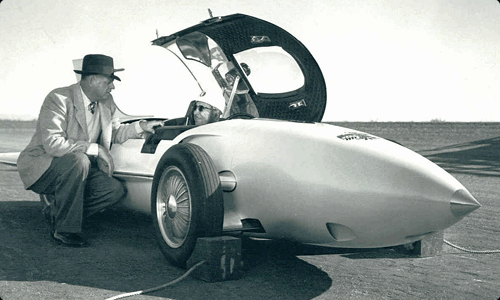
Harley Earl with Mauri Rose, Indy champion and Firebird I test driver
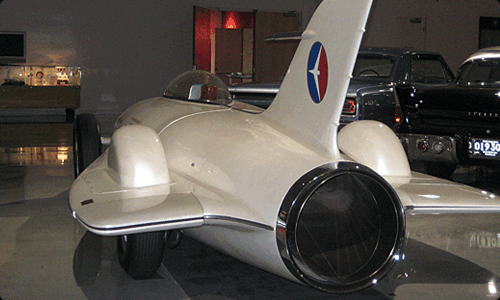
The Firebird I was powered not by jet thrust, but through a transmission driving the rear wheels
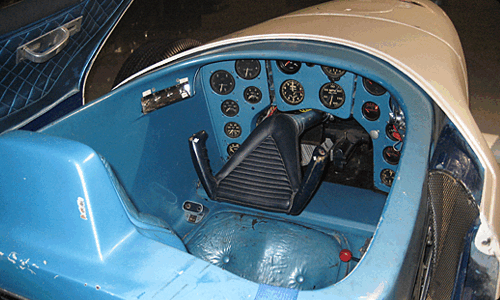
The Firebird's aircraft-inspired cockpit
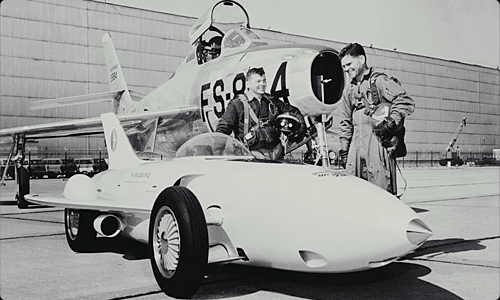
Firebird I with Republic F-84 Thunderstreak
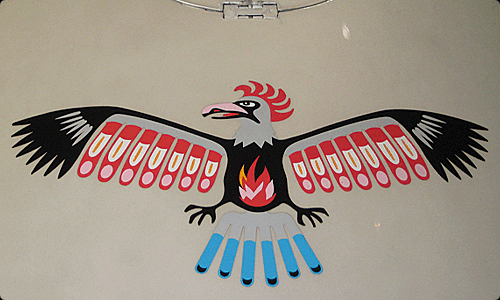
The original "Firebird" painted on the nose
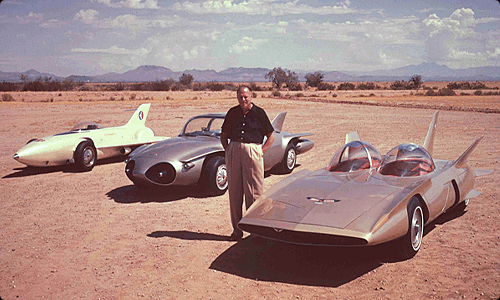
Harley Earl and all three of the Firebird gas turbine cars
The Firebird I at the GM Heritage Center

|

























